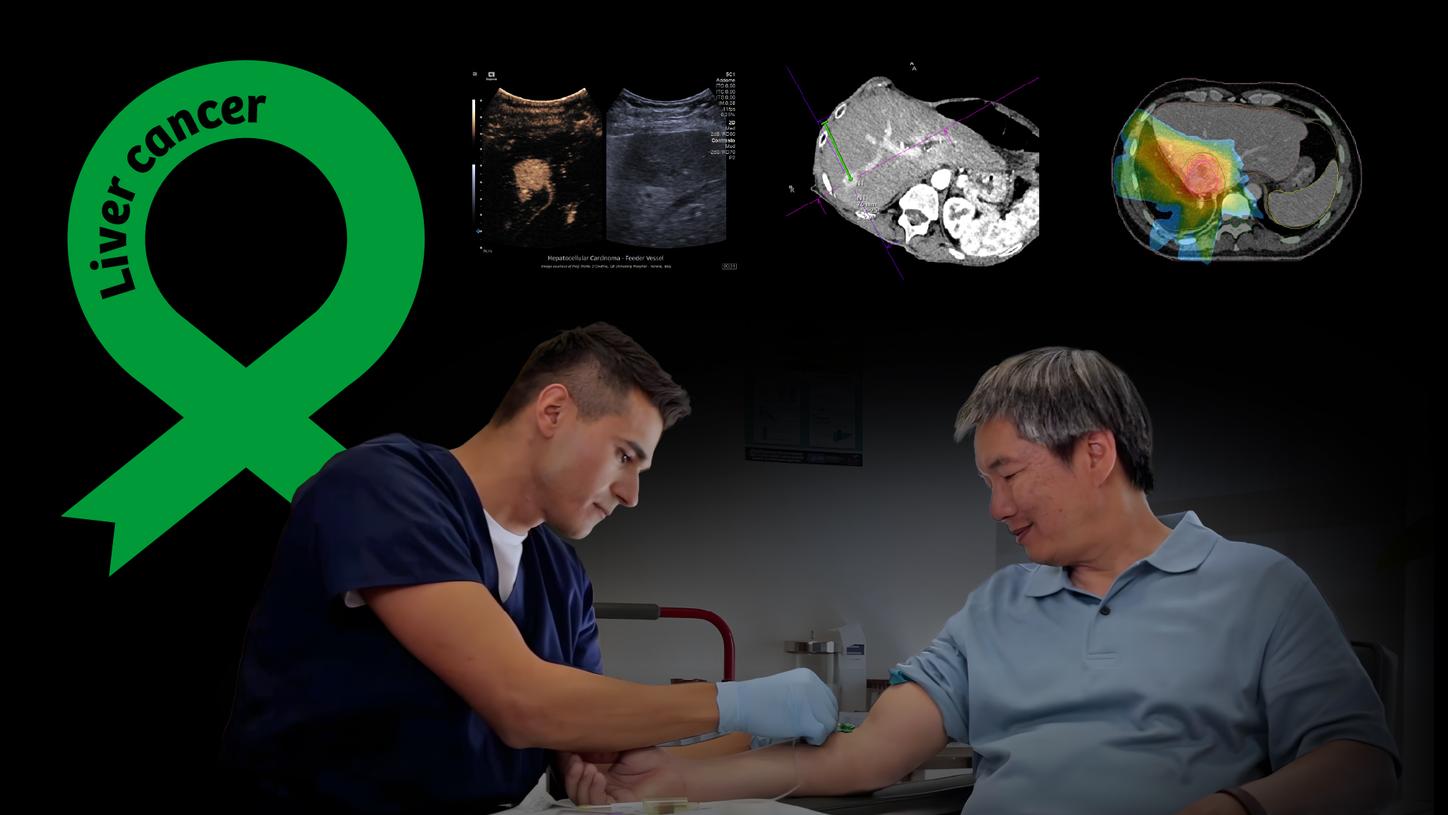
Liver cancer: From diagnosis to personalized treatment
A well-functioning liver is of vital importance. Its varied functions include supplying the brain with glucose, filtering toxins out of the blood, producing proteins, and much more. Learn about interesting facts, diagnosis, and therapy options.
Facts & figures
A healthy liver is able to perform its normal functions effectively, for example aiding digestion and breaking down harmful drugs and poisons. Continuous inflammation of the liver can lead to fibrosis – a formation of scar tissue within the liver. And extensive scarring can block the flow of blood through the liver and cause liver function to deteriorate over time. This is called cirrhosis and may eventually lead to hepatocellular carcinoma (HCC).
Several types of cancer can form in the liver. The most common type of liver cancer is hepatocellular carcinoma (HCC), which begins in the main type of liver cell (hepatocyte). Other types of liver cancer, such as intrahepatic cholangiocarcinoma and hepatoblastoma, are much less common.

Diagnosis
Liver disease can be diagnosed in various ways. As the scar tissue accumulates, the liver loses some of its elasticity and becomes stiffer. An elastography or ELF test can help diagnose and monitor liver disease or damage.




Watch Tony's story
Raising awareness of a silent crisisEarly detection is invaluable, […]. That’s the single biggest thing a patient can do. If you’re aware of it early, you can take action early and hopefully stop the progression.
Tony Villiotti, liver cancer survivor, Founder of NASH kNOWledge
Imaging modalities for liver monitoring
Therapy options




We should never forget about the quality of life of our patients."
Bernhard Meyer, MD, Head of Interventional Radiology, Hannover Medical School, Hannover, Germany
Read the full article
In order to accurately represent a patient´s liver, a lot of data is required for its digital twin.
Modeling the human liverI think it’s very rewarding to try and apply science to build solutions that could help patients live longer and healthier lives.
Chloé Audigier, Senior AI Research Scientist at Siemens Healthineers
- The concepts and information presented here are based on research results that are not commercially available. Further commercial availability cannot be guaranteed.
The statements by customers of Siemens Healthineers described herein are based on results that were achieved in the customer’s unique setting. Since there is no “typical” hospital and many variables exist (e.g., hospital size, case mix, level of IT adoption) there can be no guarantee that other customers will achieve the same results.






















